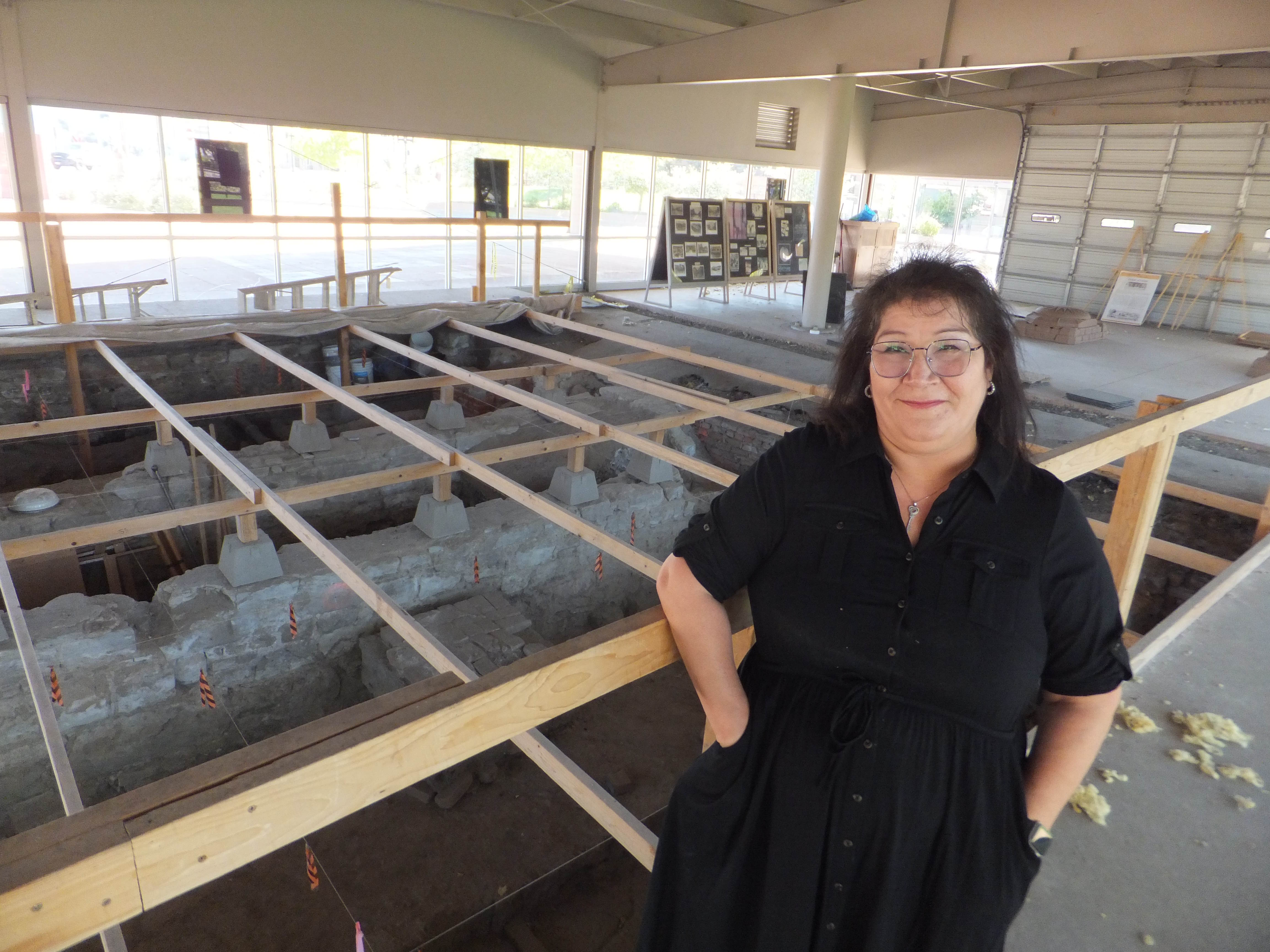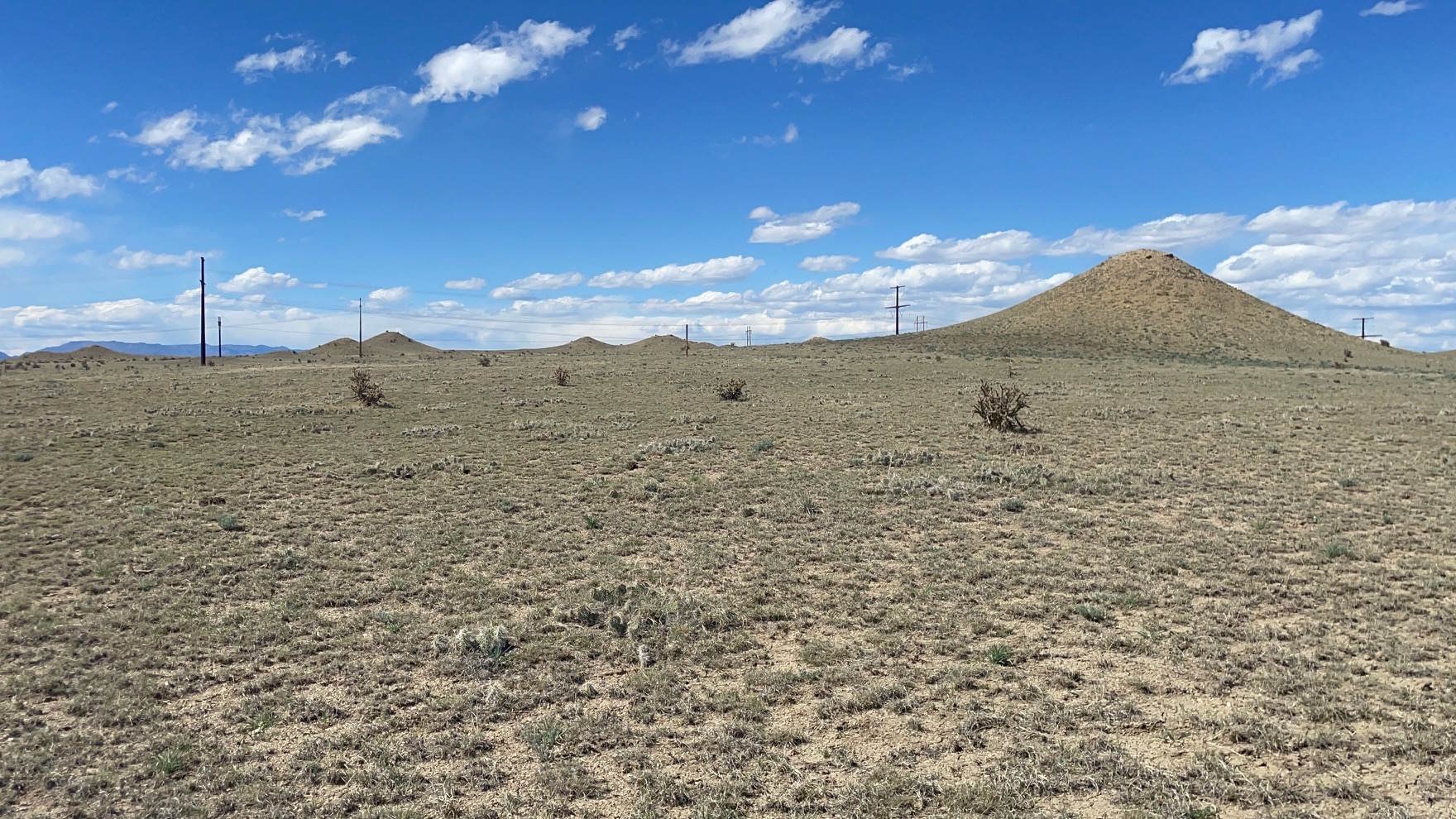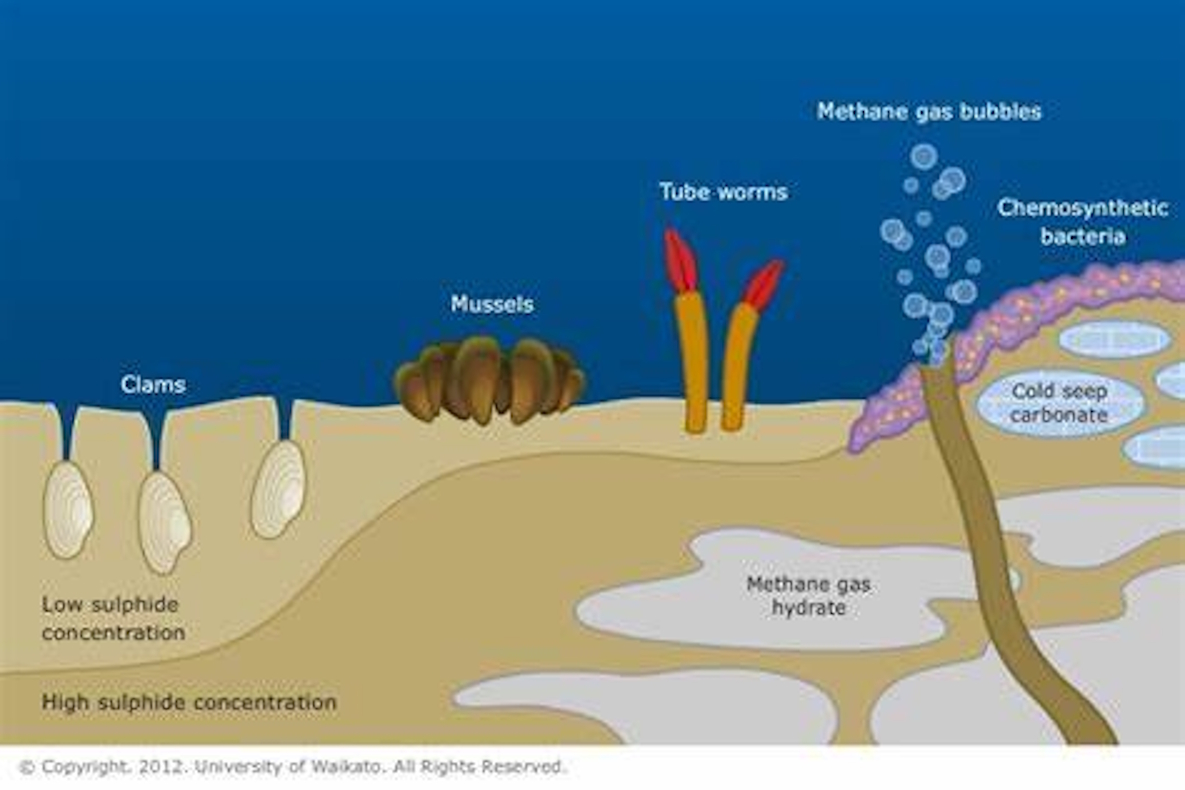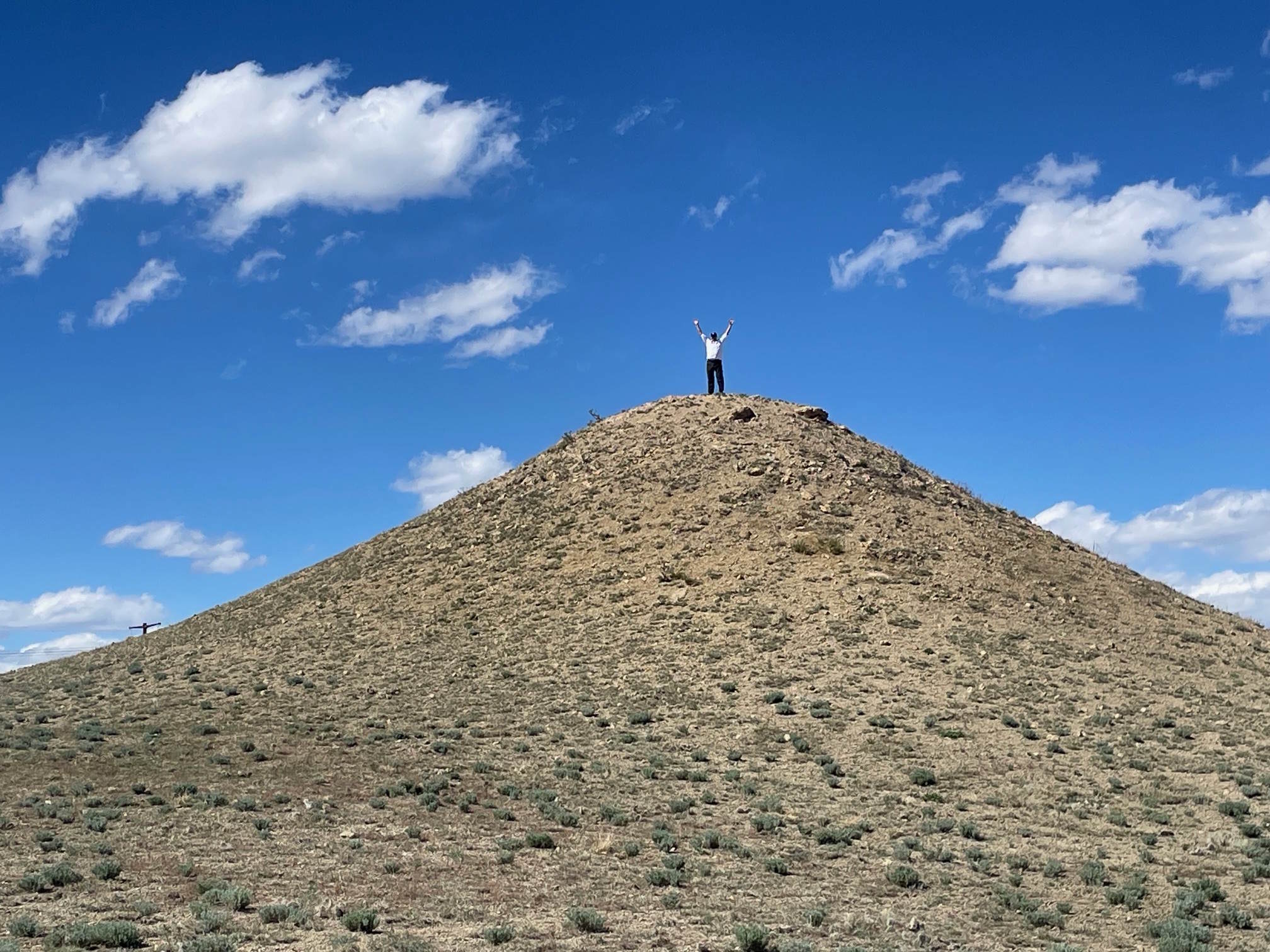Kevin here: I woke up from a deep sleep in a semi-panic. WIND!!! WYOMING WIND!!!
I had failed to account for headwinds.
While planning for this event, I created a spreadsheet detailing how far the expected trail was between different points. Day-by-day, I had created a plan for how far we had to hike or bike, what kind of road we thought we would be on (paved, trail, gravel, dirt, sand, etc.) which influences how fast you can travel.
But apparently my mind wasn’t satisfied. Waking me out of a deep sleep in panic mode is NOT cool. More later.

Monday we had our first full day of biking … AFTER we interviewed Dianne Archuleta, director of the Pueblo Museum. Ms. Archuleta spent nearly a full hour with us detailing the finding the el pueblo adobe foundations. After the archeological excavations were completed, the State of Colorado built a protective building over the site. The museum conducts educational programs using their ‘reconstructed pueblo’ a few dozen yards from the original site.


After the interview, we drove out to where we stopped hiking on Saturday, then started biking up to Hanover Road where the ‘little hills’ are seen.
The wind was so strong! How strong was it you ask? So noisy that Denny had me repeat an interview 4 times. Even with wind noise filters, it was ‘no go.’ Finally we decided to just make a ‘B-roll’ and I’ll voice over the details later. Watch for it.
The ‘little hills’ mentioned by Battalion journalists (Shupe?) are right beside the Wilson Cemetery of Pueblo Colorado. If you look at them in Goolge Maps or Apple Maps, they are the bright cream colored dots surrounding the cemetery. Interestingly, the ‘cone hills’ which Kearny’s men described the prior year are also surrounding a cemetery. I guess the landforms are so distinctive that people just used them as landmarks to their local cemetery.

Long story short, these hills were created by methane gas bubbling up from the sea floor when these rocks were still mud at the bottom of the ocean. Clams and other critters lived on the methane and as they died their remains were fossilized. The fossils got so hard that when the rocks were eventually exposed at the surface and started eroding, these hills remained longer than the surround mudstones forming the cone shaped hills.
In a sense, they are similar to the remains of an eroded volcanic pipe – like Shiprock New Mexico. Different methods of creation, but the erosional remnants are harder than the surround materials, leaving the ‘core’ of the causative process.

Locally the hills the Battalion boys mentioned are called ‘tipi hills.’ Apt name. I couldn’t resist climbing the largest one so Denny’s photo would have a sense of scale. King of the Mountain.

